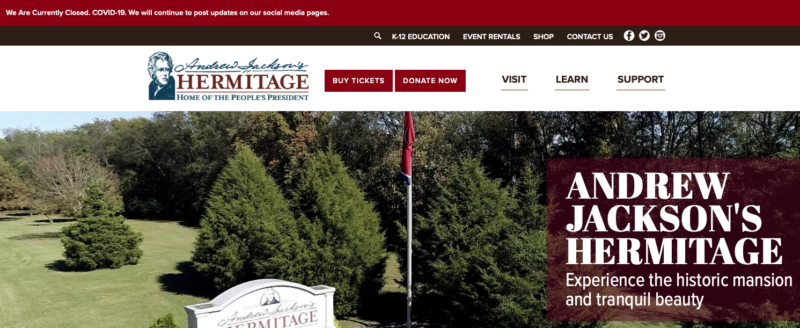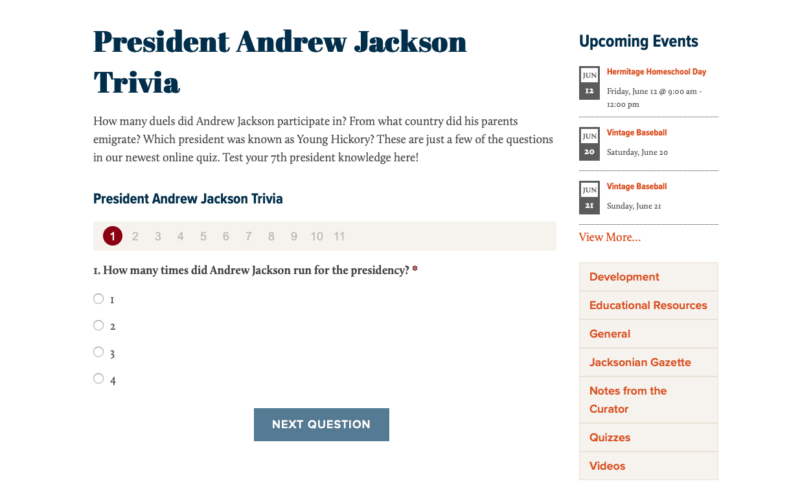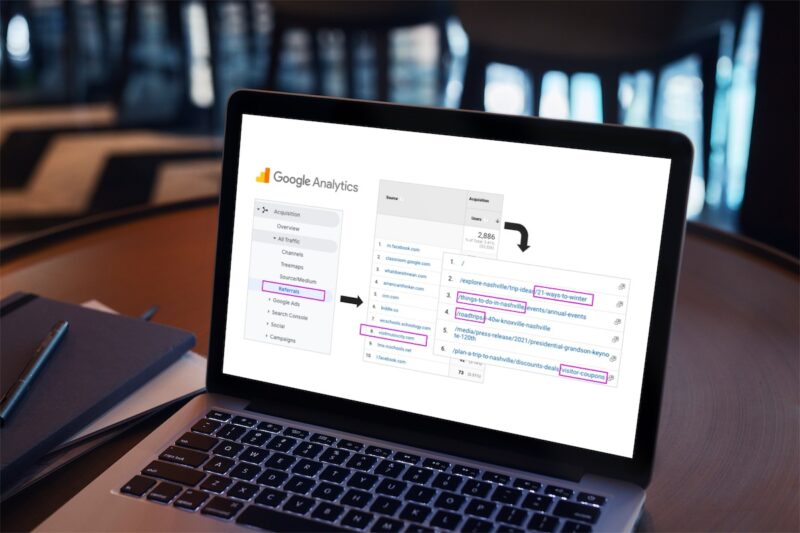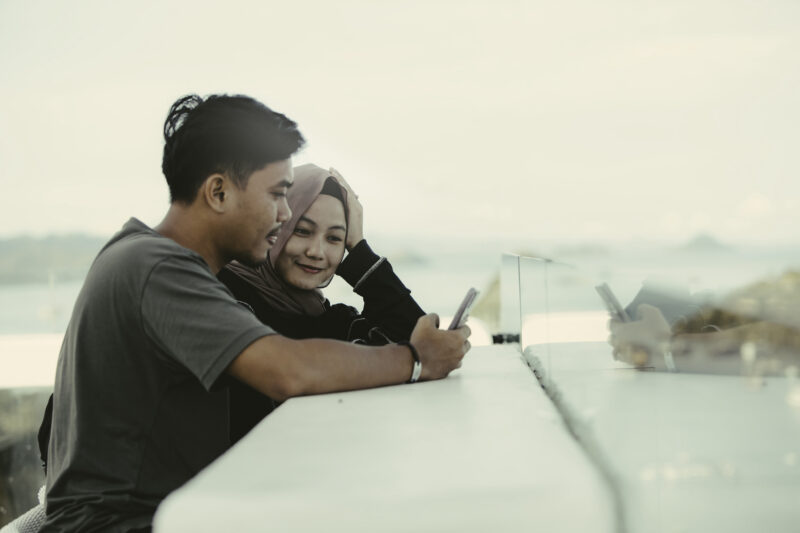If you’re a museum or historical site, you’re built for exploration. Having visitors on site — walking through galleries and exhibits, participating in tours and classes, wandering the grounds — is in your DNA. But with today’s technology and communication tools at our disposal, you can also interact with your audience beyond your physical space.
We’ve put together 10 ideas to help museums and historic sites strengthen their online presence and keep visitors engaged.
Virtual Engagement Strategies for Museums
1. Make Important Information Easy to Find
People visit your website for key details—exhibit schedules, special events, membership perks, and more. Ensure your website is a reliable source of up-to-date information. Consider adding a site-wide alert banner for major updates and creating dedicated landing pages for seasonal events, ticket promotions, or new exhibits.
We helped The Hermitage create a site-wide alert banner that you can’t miss.
2. Grow Your Email List with Exclusive Incentives
While visitors explore your website, invite them to join your email list for exclusive updates, behind-the-scenes content, or early access to event registrations. Use a pop-up or sign-up form with an incentive—such as a discount in your online store, a free downloadable guide, or priority booking for special events—to increase conversions.
3. Source Social Media Content from Your Followers
User-generated content is a great way to boost engagement and authenticity. Encourage your followers to share their experiences, memories, and favorite exhibits. Here are some prompts to get them started:
- Memory Lane: Ask visitors to share a favorite museum visit from childhood.
- Artifact Guessing Game: Post an artifact and challenge followers to guess its origin or purpose.
- Creative Kids Challenge: Invite parents to share videos of their kids describing historical items or artwork
4. Host an Online Contest
Contests generate excitement and interaction. Keep it relevant to your museum’s theme and offer a fun prize, like free tickets or exclusive merchandise. Here are a few ideas:
- Recreate a Masterpiece: Have participants recreate a famous painting or historical moment at home.
- History Trivia Challenge: Ask followers to answer questions about a historical figure or event.
- Costume Contest: Encourage users to dress as a famous character from history or a favorite exhibit.
5. Offer Interactive Classes & Virtual Lessons
Leverage your educational team to provide engaging learning opportunities. Create interactive video lessons, demonstrations, or downloadable activity guides for students and teachers. Topics can range from art techniques to historical storytelling, aligning with school curricula.
6. Share Behind-the-Scenes Content
Give your audience a glimpse of what happens beyond the exhibits. Virtual tours of archives, conservation labs, or restoration projects can provide fascinating insights that enhance their appreciation for your work.
7. Host a Virtual Viewing Party
Do you have an educational film or documentary that aligns with your museum’s focus? Consider hosting an online screening even with live commentary, Q&A sessions, or discussion prompts to keep the conversation going.
8. Hold a Live Q&A or Trivia Session
Live events on platforms like Facebook, Instagram, or YouTube are a great way to connect with audiences in real time. Invite curators or historians to answer audience-submitted questions, or host a live trivia session where participants can test their knowledge for a chance to win a prize.
9. Create Interactive Quizzes
For self-paced engagement, develop interactive quizzes about your museum’s collection, historical events, or famous figures. These quizzes can be shared via your website, social media, or email campaigns.
10. Keep Engaging Your Email Subscribers
Not all of your followers are on social media, so email remains a powerful engagement tool. Repurpose social content into newsletters, share upcoming events, and provide exclusive insights into exhibits to keep your subscribers interested.
Expanding Your Reach Beyond the Museum Walls
Your museum’s mission goes beyond the physical space. By embracing digital engagement strategies, you can extend your reach, deepen connections with your audience, and create lasting relationships that keep visitors returning, both online and in person.
Ready to enhance your museum’s digital presence? Let’s start building an online experience that keeps visitors engaged—wherever they are! Learn more about our museum website design services.





